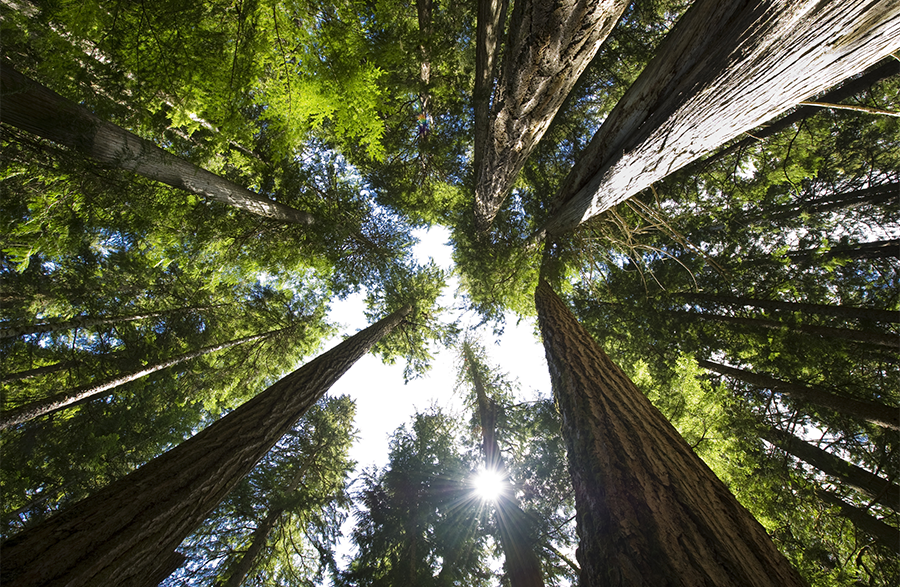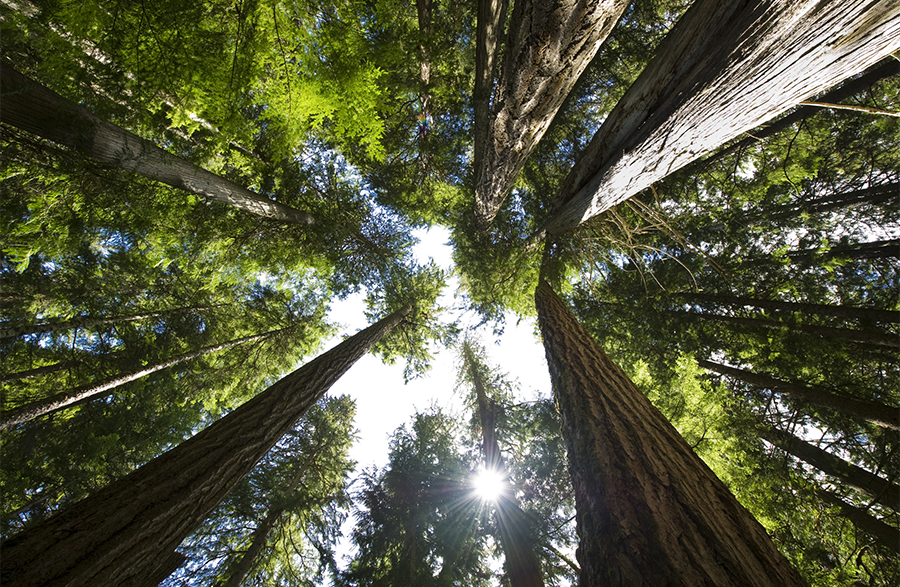The Effects of Atmospheric Nitrogen on the Growth and Survival of Trees Vary with Climate and Soil Conditions
Clients
Electric Power Research Institute (EPRI)
Trees provide numerous benefits to the world—they sequester carbon, provide shade, and function as important habitats for many species, for instance. Scientists at Sonoma Technology led a team that included experts from the U.S. Environmental Protection Agency and Syracuse University to evaluate how the growth and survival of trees is affected by nitrogen in the atmosphere. While nitrogen occurs naturally in our planet’s atmosphere, it is also associated with pollution from activities such as coal and oil burning.<br>
The researchers analyzed data from millions of individual trees growing across the United States. The team focused on 10 ecologically and economically important species of trees, including Douglas fir, quaking aspen, sugar maple, and Western hemlock. On a per-tree basis, the researchers calculated the levels of nitrogen deposition that resulted in a meaningful decrease in the trees’ growth rates and survival probabilities. The research built upon machine learning modeling techniques that were developed and reported on <a href="https://doi.org/10.1016/j.scitotenv.2022.159252" target="_blank">in prior Sonoma Technology work,</a href> and new techniques were developed to represent localized conditions that control the sensitivity of trees to nitrogen deposition. The team accounted for potential confounding factors such as soil characteristics and environmental stress brought on by droughts.<br>
The researchers found significant differences across tree species and among individuals of each species. For instance, the team found that yellow poplar trees were able to withstand the highest levels of nitrogen before their growth or survival were impacted. Similarly, local factors, including climate and soil characteristics as well as inter-tree competition, were found to be key mediating factors controlling local sensitivity to nitrogen deposition. These findings indicate the broad variability in tree sensitivity to pollution across the country and can support environmental management and policy decision-making processes when it comes to forest resources. Results of this project were <a href="https://esajournals.onlinelibrary.wiley.com/doi/10.1002/ecs2.4925" target="_blank">published in <i>Ecosphere</i></a href>.
The researchers analyzed data from millions of individual trees growing across the United States. The team focused on 10 ecologically and economically important species of trees, including Douglas fir, quaking aspen, sugar maple, and Western hemlock. On a per-tree basis, the researchers calculated the levels of nitrogen deposition that resulted in a meaningful decrease in the trees’ growth rates and survival probabilities. The research built upon machine learning modeling techniques that were developed and reported on <a href="https://doi.org/10.1016/j.scitotenv.2022.159252" target="_blank">in prior Sonoma Technology work,</a href> and new techniques were developed to represent localized conditions that control the sensitivity of trees to nitrogen deposition. The team accounted for potential confounding factors such as soil characteristics and environmental stress brought on by droughts.<br>
The researchers found significant differences across tree species and among individuals of each species. For instance, the team found that yellow poplar trees were able to withstand the highest levels of nitrogen before their growth or survival were impacted. Similarly, local factors, including climate and soil characteristics as well as inter-tree competition, were found to be key mediating factors controlling local sensitivity to nitrogen deposition. These findings indicate the broad variability in tree sensitivity to pollution across the country and can support environmental management and policy decision-making processes when it comes to forest resources. Results of this project were <a href="https://esajournals.onlinelibrary.wiley.com/doi/10.1002/ecs2.4925" target="_blank">published in <i>Ecosphere</i></a href>.
Air Quality
Applied Research
Emissions
Exposure
Modeling


Nathan R. Pavlovic

Nathan
R.
Pavlovic
Lead Geospatial Data Scientist / Group Manager, Geospatial Data Science / R Resource Coordinator
npavlovic@sonomatech.com
/sites/default/files/2025-03/NRPres.pdf
